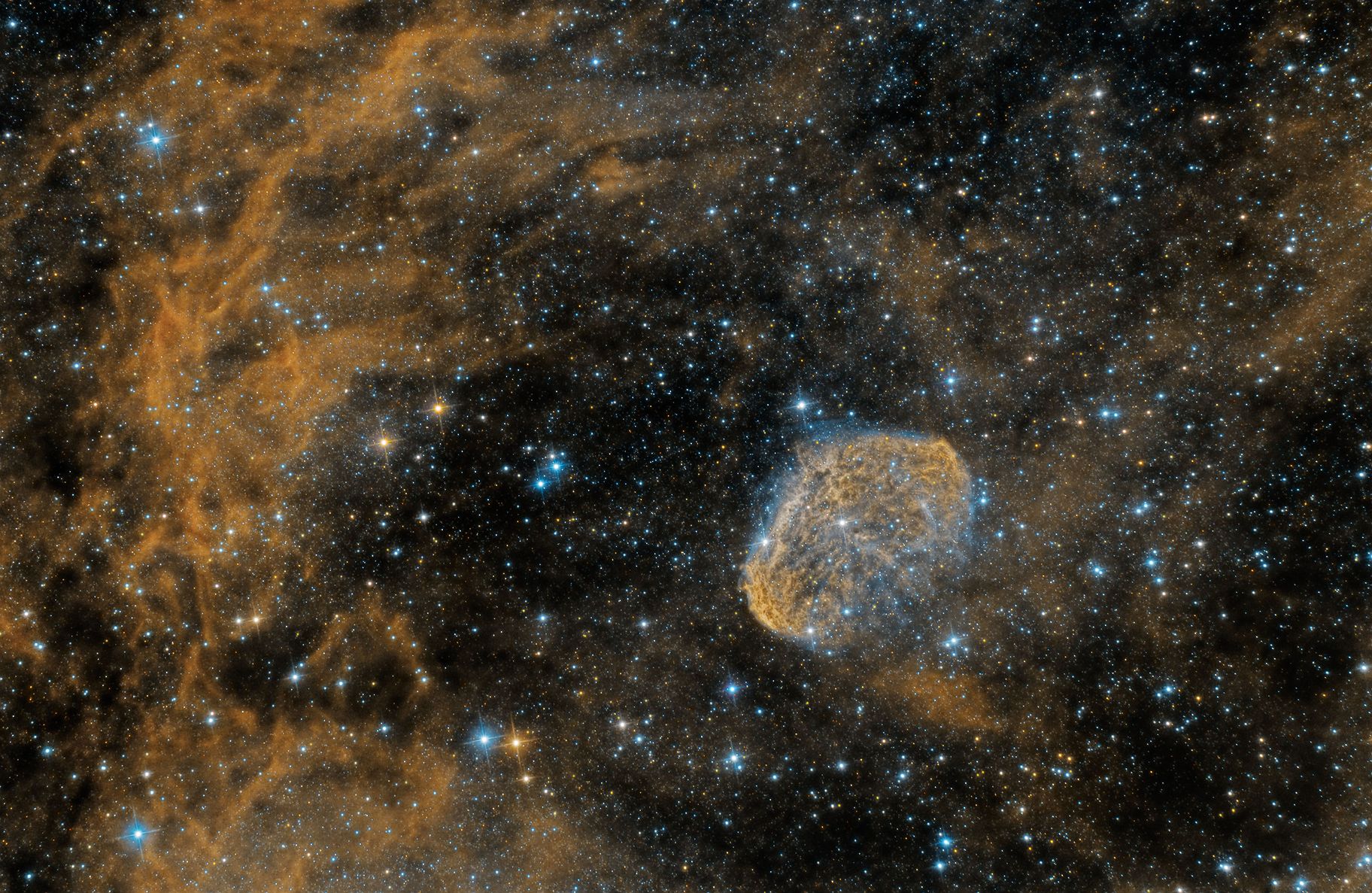Hi
@Stefan B
A friend of mine lent me his L-eNhance last night to play with a bit

rest of the week is going to be bad weather.. so could only do some tests last night.
I've tried adding L-enhance data to my M27, and well.. guess I'm not doing it right. but,
also guess is not enough data to use as luminance maybe, (took 32x5min with L-enhance)
Although the difference in signal was amazing...was very impressed.
Adding some comparisions here, stretched in Nebulosity just to check. both are 5min single sub.
right with L-pro and left with L-eNhance.. I do need to get one of these filters!! at least to image
from my town...
-
- WhatsApp Image 2021-06-15 at 02.42.59.jpeg (283.45 KiB) Viewed 9909 times
-
- WhatsApp Image 2021-06-15 at 01.53.33.jpeg (280.1 KiB) Viewed 9909 times
And then tried to add this data to L-pro.
-
- WhatsApp Image 2021-06-15 at 13.15.10.jpeg (94.41 KiB) Viewed 9909 times
Tried many different methods...but not sure if I do it right. Guess still got to test more.
Tested;
1- using it straight as Luminance then RGB(L-pro in each slot)
2- take apart RGB and and L-enhance, then merge H-a + Red and B+Oiii.
I think result 1 was better, Ive selected "Legacy" .
Also tried Layer method, (this one posted ) that did work kinda Ok for star colors. I have done
an inversed mask and use brighten I think. I should check the log, I was just testing so much that
I've lost track. Will try to do again and take notes in case I get a decent result

But so far so good
The performance of the filter really surprised me...perhaps L-eXtreme would be even stronger.
I've did a test shot at Lagoon and Trifid, but it seems like picked up a lot of red and not much of blue.
(guiding didnt go well on that part of sky so just one sub, and not even good )
Have not tried HOO since there's not much data. No Idea if would work. my test. Perhaps in Layer with
inverted star mask and swap bg and fg so the nebula color is kept on top of the RGB stars ?
Regards
Carles.

